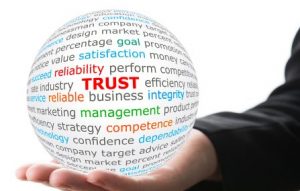
Smart Leaders of Change are Authentic
The most successful companies are led by people who recognize the need for change and manage it well. As I wrote in previous posts, smart

The most successful companies are led by people who recognize the need for change and manage it well. As I wrote in previous posts, smart

I think we can all agree: companies can no longer be impersonal buildings where employees show up each day, carry out their duties and shut

Most people I work with say their company values include such items as Integrity, Customer Service, Quality, Respect, High Performance, Teamwork, Leadership, and Innovation. Often these words

It’s no secret: we follow leaders who engage and inspire us, relate to us and instill trust. But it certainly is surprising how often we

The most successful leaders I know offer their employees a rewarding work life—an environment that cares for them, values their contributions and gives them a

The topic of leadership authenticity is popping up with great frequency these days, and I’ve noticed that there are two very different definitions (and criticisms)

Are you a positive leader? It’s not just a matter of being “nicer” or more appreciative to people at work. Positive leaders place a higher

I’ve been exploring what it takes for leaders to become more authentic leaders. According to author Karissa Thacker in The Art of Authenticity (Wiley, 2016),

An organization’s health is only as sound as its leader’s decisions. Some companies prosper from wise leadership directions, while others struggle after flawed choices—choices that

How a leader responds to adversity reveals how effective that leader truly is. Reactions to setbacks or crises not only test leadership character but define

Business is an active, demanding endeavor. Only those who consistently apply themselves succeed. Organizations that thrive require leaders who actively dream, plan, engage, solve, pursue,

Surveys and studies indicate global job dissatisfaction is at a two-decade high. Disengaged employees account for nearly 70 percent of the workforce, which significantly affects







